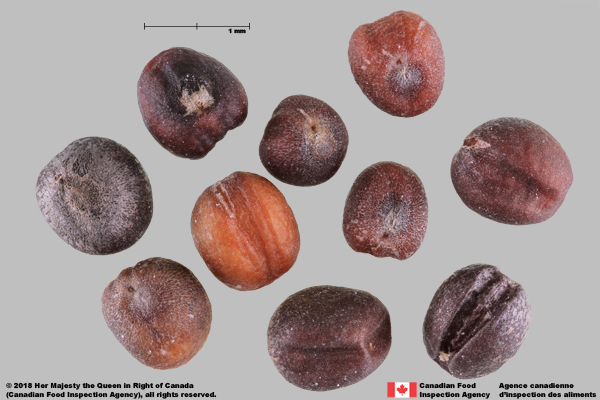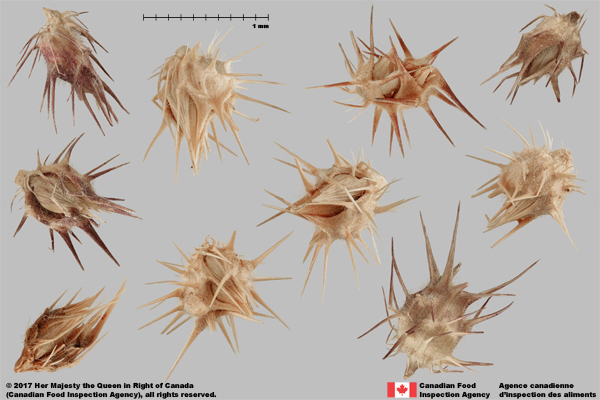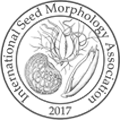Method for Seed Size Measurement
Scope:
A standard and scientific method for measuring seed size, the features that will be used for seed identification or morphological description. Seed is defined as any disseminule, a part of a plant that serves to propagate. This includes botanical seeds, dry fruits, fruit fragments, vegetative reproduction parts such as bulbs, that is, all types of plant dispersal units for propagation.
Purpose:
- To establish a standard and scientific method to measure seed size for generating seed identification features.
- To establish a standard method to label seed size for seed diagnostic images.
Background and Definition:
Seed size is an important seed identification feature along with seed shape and seed texture. Seed size is relatively conserved and stable within a species; however, there is variation in seed size depending on the species, seed position within a fruit or on the plant, seed maturity, dimorphic or heteromorphic seeds, and abnormity due to environmental conditions, chemicals, or diseases. In this protocol, we define seed size as the average size range of representative, mature seeds and measured with a defined method:
- Seed size: the size range of mature and normal seeds of a species.
- Seed length: the maximum seed length of a seed under measurement, usually the longest axis of the seed.
- Seed width: the maximum seed width of a seed under measurement, usually the second longest axis, perpendicular or nearly so to the length axis.
- Seed thickness: the maximum seed thickness under measurement, usually the third longest axis, if needed.
|
|
|
|
Achene of Centaurea calcitrapa (Asteraceae) showing length and width axes |
Achene of Centaurea calcitrapa (Asteraceae) showing thickness axis |
Procedures and Methods:
Sampling for Seed Size Measurement:
Seed size measurement will be based on the size variation of mature seeds of a species. The standard for seed size measurement is based on a minimum of 10 seeds; however, when the population is highly variable, the measurement data may be increased to 20 seeds.
In preparation for seed measurement:
- Select representative and suitable seeds of the species to be measured with verified specimens.
- Examine the intraspecies variation and determine the number of seeds that need to be measured i.e. between 10-20 mature and normal seeds.
- If multiple verified specimens or populations are available for the same species, all specimens should be examined for size variation.
- With this selective sampling, 10 seeds are usually measured; however, with high size variation, a greater number of seeds shall be used for the measurement.
|
|
|
|
10 achenes of Leucanthemum vulgare (Asteraceae) showing size variation |
20 seeds of Hesperis matronalis (Brassicaceae) showing size variation |
Methods for Measuring Seed Size
Seed size can be measured by two main methods: image measurement or manual measurement as described below. All measurements must be expressed in either millimeter (mm) or centimeters (cm) to one or two decimal places. Use of an appropriate level of magnification, e.g. 10x-40x during the measurement is recommended.
Image (digital) Measurement
Image measurement will be used:
- When seeds can be imaged with their length and width axes visible in resting position or able to be positioned manually using an adhesive and the seed image will not skew the dimensions of the seeds, e.g. seeds with flat faces and seeds without obscuring parts. Digital measurement can be used for the length and width and can be accurate and efficient.
|
|
|
|
Achenes of Fallopia convolvulus (Polygonaceae) showing consistent shape in a resting position on one flat face |
Achenes of Sonchus oleraceus (Asteraceae) showing consistent shape in a resting position |
Image measurement procedures:
Conduct a calibration:
- Calibrating images from the camera: Camera images will always need to be calibrated with an object of known scale, e.g., a calibrated scientific ruler, included within the camera shots.
- Calibrating images from the microscope: Under high magnification, a microscope ruler or micrometer is recommended for small seeds. When a microscope has an internal calibration system, it is a best practice to have the calibration checked manually before using the micrometer.
Take and record measurements:
- Taking measurements using available software, such as “ImageJ”
*Note: A number of software programs are available which can record measurements such as Adobe Photoshop, or other or similar microscope imaging software.
Here is an example of taking measurements using “ImageJ”:
This image shows two methods: the “box” which measures length and width simultaneously, perfectly perpendicular to each other (best when seeds have a simple, regular shape), and as two separate linear measurements, (suitable when length and width aren’t perpendicular or other.
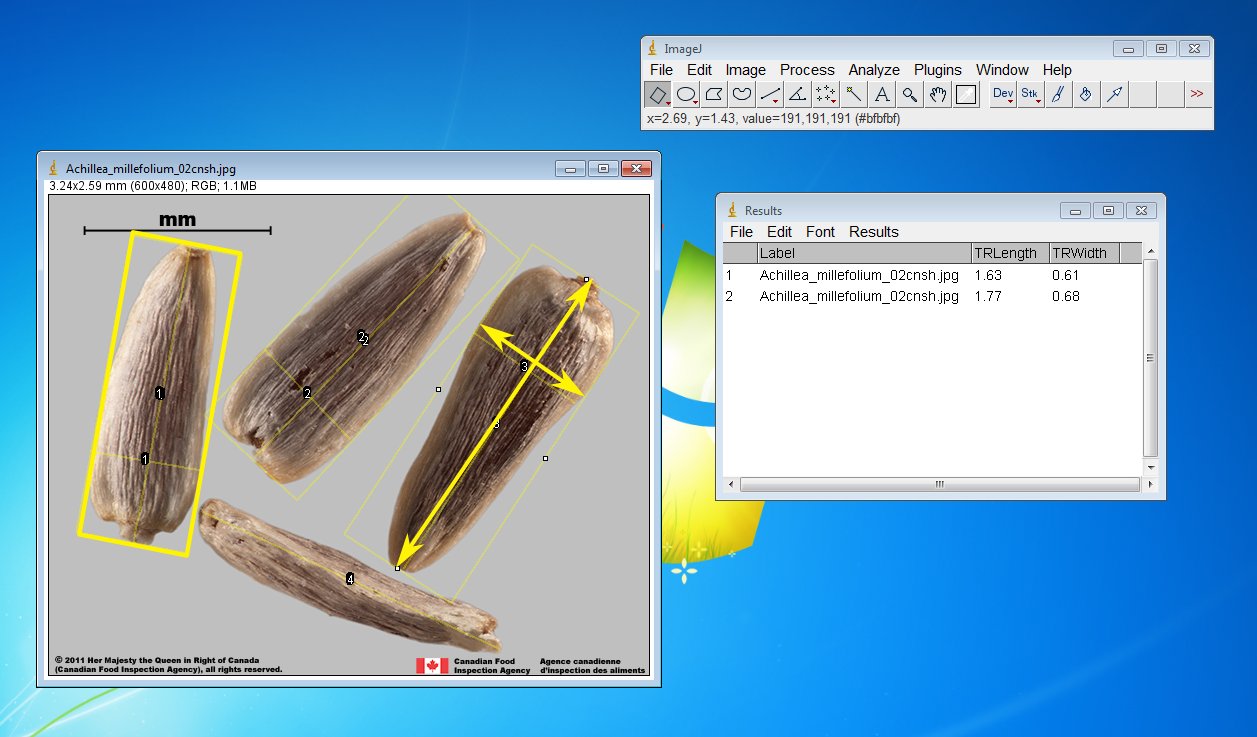
- Record and calculate the measurement: Export the set of measurements to a spreadsheet to calculate or average the measurement.
Manual Measurement
Manual measurement will be used:
- When seeds are not able to be positioned for a consistent display of the length and width axes, eg. angular seeds, inflated seeds, obscuring accessory parts, attachments that prevent the seeds from lying flat, or if digital equipment is not available, the manual measuring method must be used.
Manual measurement procedures:
Use validated measuring devices, such as:
- Calibrated ruler
- Calipers
- Eyepiece micrometer
|
|
|
|
Seeds of Brassica napus (Brassicaceae) show variation in shape depending on resting position |
Burs of Cenchrus spinifex (Poaceae) show variation in shape depending on resting position |
Record and calculate the measurement: record data in a pre-designed datasheet and calculate (see below)
Data Recording and Calculation
Data is recommended to be recorded into a spreadsheet, providing the following data, when applicable:
- Size range: maximum and minimum measurements
- Average size: the mean of the measurements
Example of a data recording and calculation sheet
Click to download sample datasheet
|
No. of seeds |
Seed length | Seed width | Seed Diameter | Seed thickness |
| 1 | ||||
| 2 | ||||
| .. | ||||
| 20 | ||||
| Average | ||||
| Maximum | ||||
| Minimum |
| Authored by: | Images by: | |
| ISMA Editorial Board for ®Seed Identification Guide | ©2019 Canadian Food Inspection Agency, all right reserved. |
©2019 International Seed Morphology Association, all right reserved.


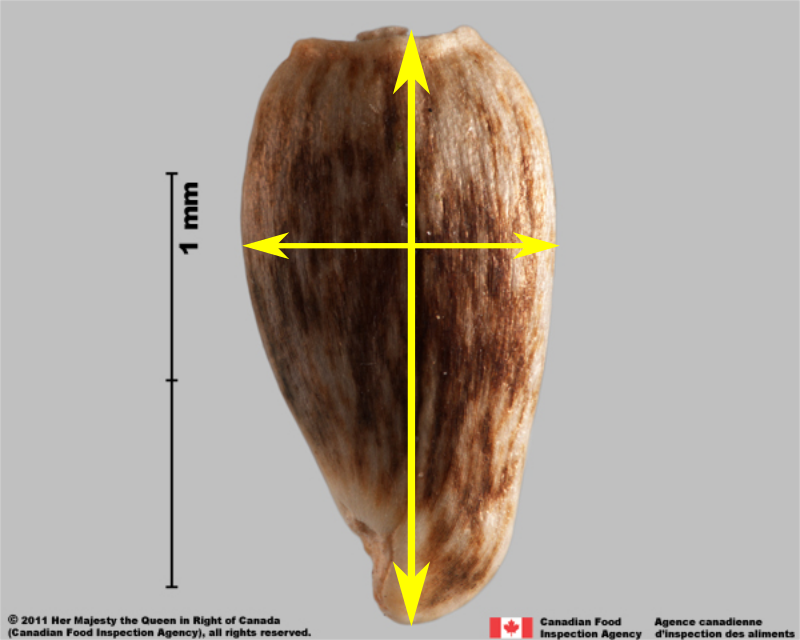
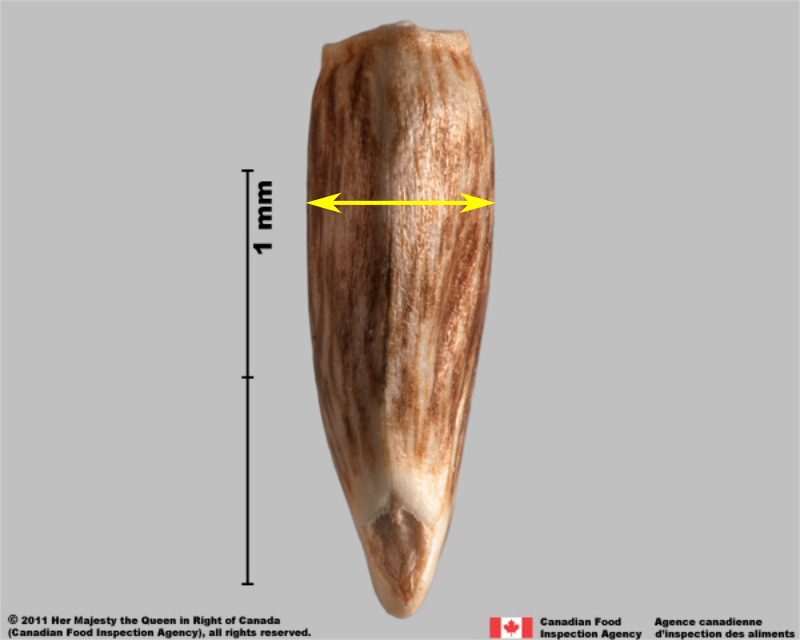
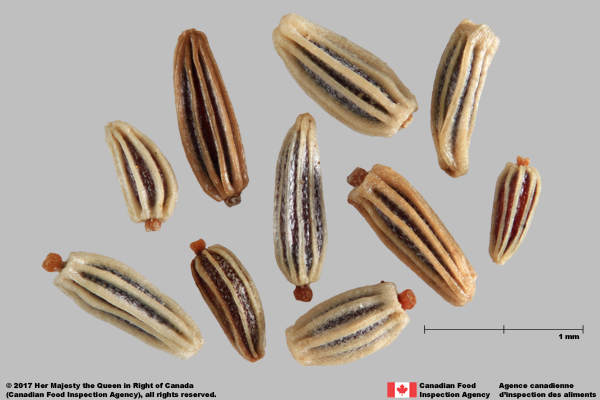
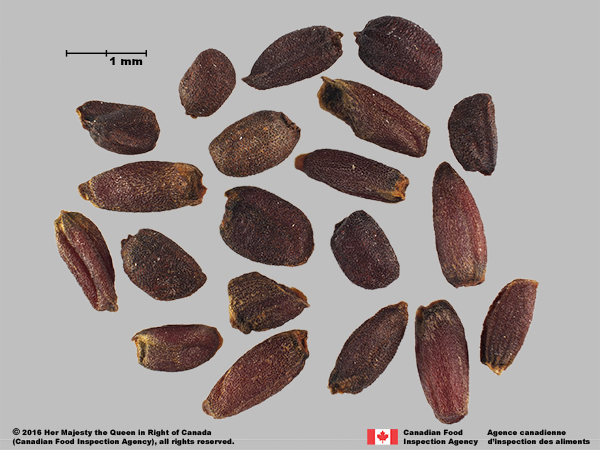
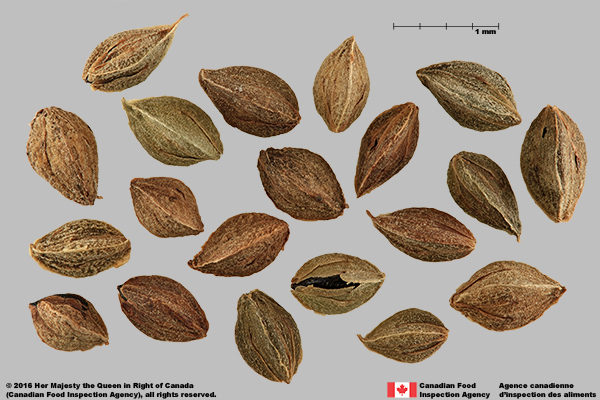
.jpg)
